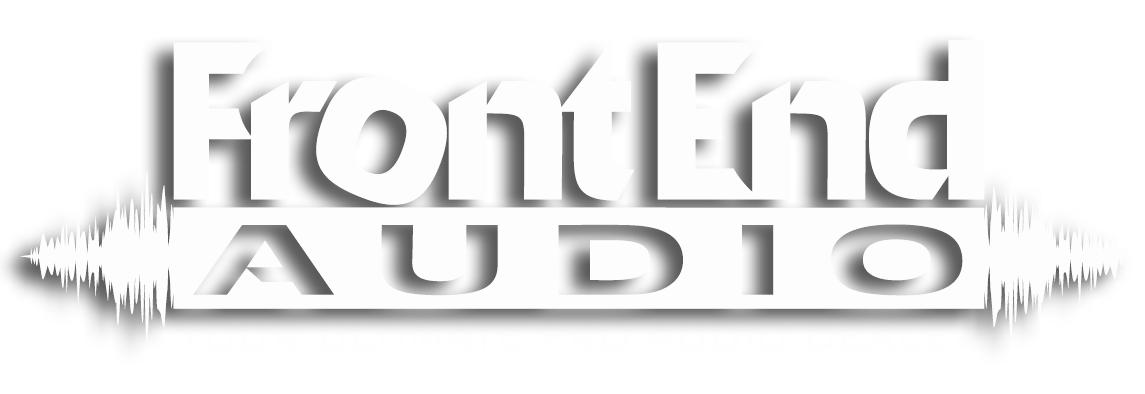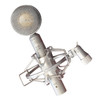The 3 Zigma Steel & Nylon Guitar 2x6 Hybrid Microphone Kit gives you a custom optimized hybrid-mic kit, made specifically for giving you optimal tonal options for capturing both steel-string acoustic AND nylon-string 'classical' guitars, presenting them in the most flattering and natural light possible.
3 Zigma Steel & Nylon Guitar Microphone Kit takes the same basic form of the Steel String Microphone Kit, but alters it slightly to optimize for more detail and air as would be required from a nylon string guitar which is already very mellow. Substituting the C-LOL-251 in place of the C-LOL-67 of the Steel String Microphone Kit. The C-LOL-251 isn't quite as "bitey" as the C-LOL-12, yet provides more "air" as well as a slightly more full and voluptuous bottom (ahem).
The 3 Zigma Steel & Nylon Guitar Microphone Kit consists of 2 x HA-TL transformerless Head-Amps. 1 x C-Lol-12 lollipop capsule, 1 x C-Lol-251 lollipop capsule, 4 x SD Capsule Modules, and 2 x Shock-Mounts in Jewel Box.
The 4 x Small Diaphragm Capsules are configured as 1 x Matched Pair SD-C, 1 x SD-H , 1 x SD-O-F Free-Field Omni Unless you prefer Room Mics, in which case the SD-O-D Diffuse-Field PAIR can be substituted in place of the 1 x SD-H and 1 x SD-O-F at no additional charge.
3 Zigma Steel & Nylon Guitar Microphone Kit Features
- Headamps:
- HA-TL II: Transformerless design offers a straightforward signal path with no superfluous circuitry to encumber or possibly distort the imaging of the capsule's character.
- C-LOL Lollipop Capsules
- C-Lol-12: Designed with the C12* in mind, this capsule will give the CHI head amp the color of the vintage Austrian condenser which became a favorite for pop vocal recordings. Nice predictable polar pattern control with deep bass response.
- C-Lol-251: Designed as an alternative to the C12*, to emulate the ELAM 251* and its unique treble presence. The top octave has a unique 15K peak but the presence band peaks right in the middle of the vocal range. This is a perfect modern pop microphone. Like the C-Lol-12, it has a nice, even, Cardioid response, with gradual, predictable proximity effect.
- Small Diaphragm Capsules
- SD-C Cardioid: A very typical SD capsule, probably the one you'll use most often. Straight cardioids pattern with nice, flat frequency response with only minimal treble peak, giving a very true and neutral sound with just enough reach and directionality for most jobs. The proximity effect is totally predictable.
- SD-H Hypercardioid: A more directional version of the Cardioid capsule, with more proximity effect. The treble response is still very realistic and to some people, will actually sound more "real" than the cardioid.
- SD-O Omni, available with:
- Diffuse Field response: to be used when a relatively flat treble is required off axis, for instance when the sound of the room needs to be accurately represented (darker source).
- Free Field response: to be used when a relatively flat treble is required on axis, for instance when the source needs to be accurately represented (darker room sound).
3 Zigma Steel & Nylon Guitar Microphone Kit Specifications
- C-LOL-12
- Acoustical operating principle: 27.5mm large diaphragm pressure gradient transducer
- Directional Pattern: cardioid
- Frequency range: 20Hz~20kHz
- Sensitivity:
- w/ HA-TL-II: -33dB (16mV/Pa)
- w/ HA-FX: -35dB (12.6mV/Pa)
- Output impedance:
- w/ HA-TL-II: 100 ohms
- w/ HA-FX: 200 ohms
- Equivalent noise A-weighted:
- w/ HA-TL-II: 7 dBA
- w/ HA-FX: 9 dBA
- S/N ratio (A-weighted, rel 1Pa):
- w/ HA-TL-II: 85 dBA
- w/ HA-FX: 78 dBA
- Maximum SPL @ THD 0.5%:
- w/ HA-TL-II: 137 dBA
- w/ HA-FX: 135/143/151dB (pad on 0/-8/-16dB)
- Maximum output voltage:
- w/ HA-TL-II: 12 dBu
- w/ HA-FX: 8 dBu
- Dynamic range (A-weighted, THD 0.5%):
- w/ HA-TL-II: 130 dB
- w/ HA-FX: 126 dB
- Supply voltage: 48 volts (P48)
- Current consumption: approx. 4mA
- Diameter: 22mm
- C-LOL-251
- Acoustical operating principle: 27.5mm large diaphragm pressure gradient transducer
- Directional Pattern: cardioid
- Frequency range: 20Hz~20kHz
- Sensitivity:
- w/ HA-TL-II: -34dB (20mV/Pa)
- w/ HA-FX: -36dB (15.8mV/Pa)
- Output impedance:
- w/ HA-TL-II: 100 ohms
- w/ HA-FX: 200 ohms
- Equivalent noise A-weighted:
- w/ HA-TL-II: 8 dBA
- w/ HA-FX: 10 dBA
- S/N ratio (A-weighted, rel 1Pa):
- w/ HA-TL-II: 86 dBA
- w/ HA-FX: 84 dBA
- Maximum SPL @ THD 0.5%:
- w/ HA-TL-II: 138 dBA
- w/ HA-FX: 136/144/152dB (pad on 0/-8/-16dB)
- Maximum output voltage:
- w/ HA-TL-II: 12 dBu
- w/ HA-FX: 8 dBu
- Dynamic range (A-weighted, THD 0.5%):
- w/ HA-TL-II: 130 dB
- w/ HA-FX: 126 dB
- Supply voltage: 48 volts (P48)
- Current consumption: approx. 4mA
- Diameter: 22mm
- SD Cardioid
- Acoustical operating principle: 17mm diaphragm pressure gradient transducer
- Directional Pattern: cardioid
- Frequency range: 20Hz~20kHz
- Sensitivity:
- w/ HA-TL-II: -36dB (22mV/Pa)
- w/ HA-FX: -38dB (12.6mV/Pa)
- Output impedance:
- w/ HA-TL-II: 100 ohms
- w/ HA-FX: 200 ohms
- Equivalent noise A-weighted:
- w/ HA-TL-II: 13 dBA
- w/ HA-FX: 15 dBA
- S/N ratio (A-weighted, rel 1Pa):
- w/ HA-TL-II: 81 dBA
- w/ HA-FX: 79 dBA
- Maximum SPL @ THD 0.5%:
- w/ HA-TL-II: 140 dBA
- w/ HA-FX: 138/146/154dB (pad on 0/-8/-16dB)
- Maximum output voltage:
- w/ HA-TL-II: 12 dBu
- w/ HA-FX: 8 dBu
- Dynamic range (A-weighted, THD 0.5%):
- w/ HA-TL-II: 127 dB
- w/ HA-FX: 123 dB
- Supply voltage: 48 volts (P48)
- Current consumption: approx. 4mA
- Diameter: 22mm
- Length: 19mm
3 Zigma Steel String Guitar Microphone Kit Includes
- 2 x HA-TL transformerless Head-Amps
- 1 x C-Lol-12 lollipop capsule
- 1 x C-Lol-67 lollipop capsule
- 4 x SD Capsule Modules
- Standard configuration:
- 1 x Matched Pair of SD-C Cardioid
- 1 x SC-HC Hypercardioid
- 1 x SD-O-F Free Field Omni
- Optional "Room Mic" Configuration:
- 1 x Matched Pair of SD-C Cardioid
- 1 x Matched Pair of SD-O-D Diffuse-Field Omni
- 2 x Shock-Mounts
- Velvet Pouches for Mics
- Manufacturer's Warranty
What People Are Saying...
"After hearing the 3 Zigma C-LOL-12 Lollipop on the Pre-War Martin D-45 that Johnny Cash got from Hank Williams, Sr., Marty Stuart and I looked at each other and both agreed - this is OUR NOW and FOREVER Acoustic Guitar Mic !!! Yet when we were tracking a small Taylor fingerstyle guitar, the C-Lol-67 turned out to be the perfect Capsule. The CHI System just works great!!!"
Mick Conley - Producer/Engineer: Kathy Mattea (25 years), Patty Page, now Marty Stuart TV Show
No review yet, Be first to Write a Review
Write a Review





















 Sign Up for exclusive sales and offers!
Sign Up for exclusive sales and offers!